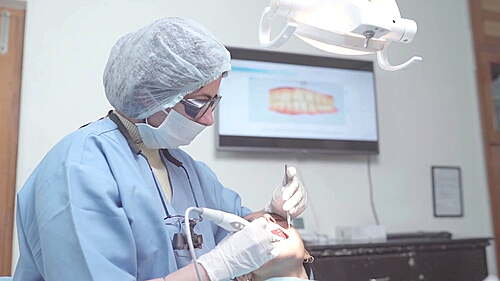Root canal treatment is a routine dental procedure to salvage a badly infected or decayed tooth. Though the term "root canal" sends shivers down people's spines, modern dental practices have made the procedure faster and less painful than ever. Here's what you can anticipate before, during, and after the root canal treatment.

Before the Root Canal
Your journey typically begins with a dental consultation. If you’re experiencing symptoms like severe tooth pain, prolonged sensitivity to hot or cold, swelling, or a pimple-like bump on your gums, your dentist may suspect an infected tooth pulp. An X-ray is usually taken to confirm the diagnosis and determine the extent of the infection.
Once the root canal is deemed necessary, your dentist will discuss the procedure, address your concerns, and may prescribe antibiotics if there’s a significant infection or swelling. You’ll also be advised to avoid putting pressure on the affected tooth until the treatment begins.
During the Root Canal
The root canal procedure is usually completed in one or two visits, depending on the complexity of the infection. Here’s what happens:
Anesthesia: Local anesthesia is provided by your dentist to numb the tissue surrounding the infected tooth so that the procedure can be performed painlessly.
Isolation: A rubber dam is draped around the tooth to isolate it from saliva and keep it dry throughout the procedure.
Access and Cleaning: A small access hole is drilled through the crown of the tooth to reach the pulp chamber. Infected pulp tissue, bacteria, and debris are removed with specialized instruments.
Shaping and Disinfection: The canals are shaped, cleaned, and disinfected to kill any remaining bacteria.
Filling the Canals: After cleaning, the canals are filled with a biocompatible material named gutta-percha and sealed to avoid future infection.
Temporary or Permanent Filling: If the treatment has been completed in more than one session, a temporary filling is done. Alternatively, a permanent filling or crown is put to restore the function and appearance of the tooth.
After the Root Canal
It's common to feel some minor discomfort or sensitivity for a few days after the treatment. Over-the-counter pain medication or pain relievers your dentist prescribes can ease this. You should not chew on the treated tooth until the final restoration is done.
The majority of patients are able to resume everyday activities the following day. Healthy oral habits—daily brushing, flossing, and follow-up dental visits—are important in order to keep the treated tooth healthy.
In most instances, a crown is often suggested post-root canal treatment to offer extra strength and protection, particularly for molars that bear more pressure during chewing.
ADC - Centre for Restorative and Implant Dentistry.
#1197 Sector 21 B, U.T, Chandigarh, INDIA 160021
Call tel. +91-708-780-0016














